Normal Anatomy - C-section |
In a normal pregnancy, the baby is positioned head down in the uterus. 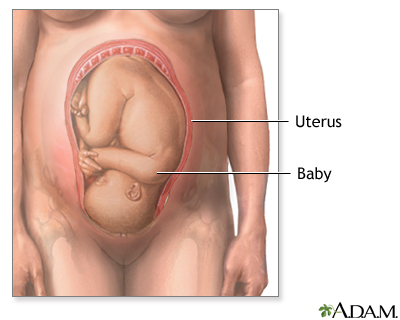 |
Indication - C-section |
Sometimes the baby is in a position, like breech (buttocks-first) or transverse (cross-wise), that makes a vaginal birth risky. Other times certain medical conditions, such as placenta previa (placenta is attached too low, blocking the baby's exit) or placenta abruptio (placenta is partially or completely detached, threatening the baby's oxygen and nutrient supply), make vaginal birth nearly impossible. A Cesarean section delivery is performed if a vaginal birth is not safe or possible for the mother or the baby. 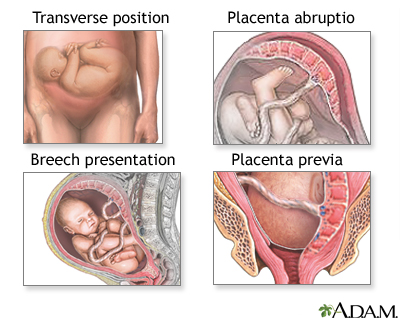 |
Procedure - C-section |
Many doctors prefer using general anesthesia, which renders the patient unconscious, for emergency C-sections because it can be administered quickly and takes effect almost immediately. When the C-section is planned, the doctor may order regional anesthetics (a spinal or an epidural), which numbs only the lower portion of the body. 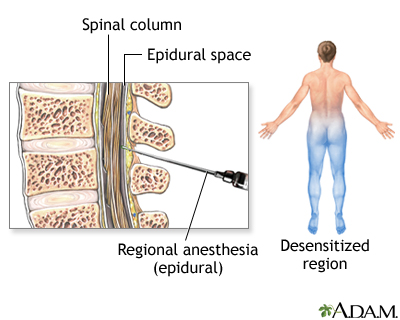 |
Procedure - C-section |
After the anesthesia takes effect, the surgeon makes an abdominal incision. In non-emergency C-sections, the surgeon usually makes a horizontal incision (a bikini cut) across the abdomen, just above the pubic area. In an emergency situation, the surgeon occasionally needs to make a vertical cut, from below the navel to just above the pubic area. A vertical cut sometimes allows quicker access to the baby. 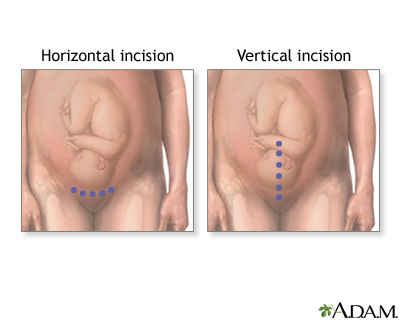 |
Procedure - C-section |
Next, the surgeon opens the uterus with either a horizontal or vertical incision, regardless the direction of the skin/abdominal incision. A vertical incision on the uterus causes less bleeding and better access to the fetus, but renders the mother unable to attempt a vaginal delivery (must have another repeat C-section) in the future. If you end up with a horizontal incision, you will have the option of either going through a trial of labor (TOL) or electing a repeat c-section. The reason for the differences between the two is that patients with vertical uterine incisions have a much higher chance of rupturing the uterus (8% to 10%) in the future pregnancies, compared to only 1% in those with horizontal incisions. 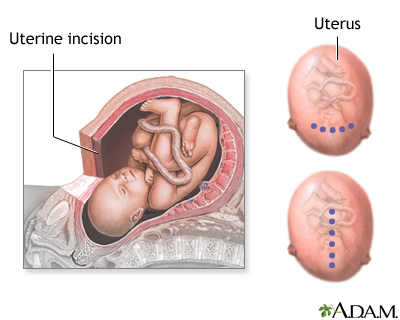 |
Procedure - C-section |
Finally, the surgeon cuts through the amniotic sac enclosing the baby. He then allows the amniotic fluid to escape. 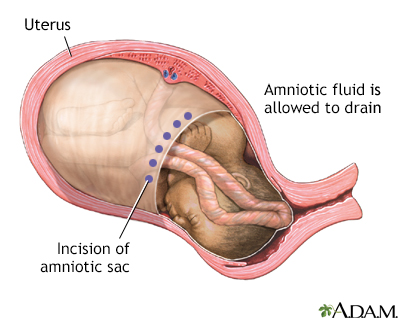 |
Procedure - C-section |
The surgeon reaches into the uterus and lifts the baby's head. An assistant pushes down on the mother's upper uterus to help guide the baby out. 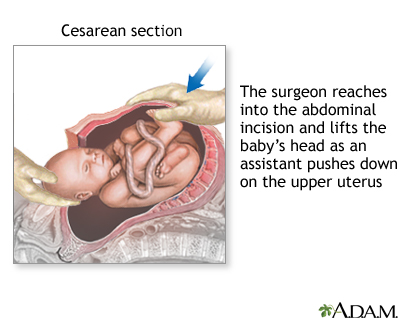 |
Procedure - C-section |
The surgeon will clamp and cut the umbilical cord. 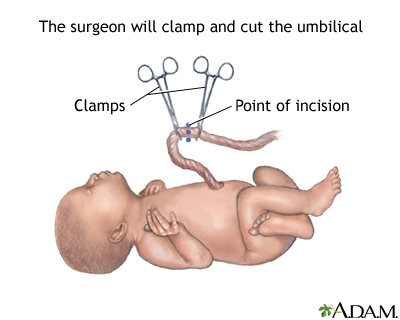 |
Aftercare |
A typical hospital stay after C-section delivery is two to three days. Usually, the doctor encourages the mother to get up and move around soon after surgery to aid healing and to prevent complications. For the first few weeks, the abdominal incision will be sore. The scar will lighten as it heals. 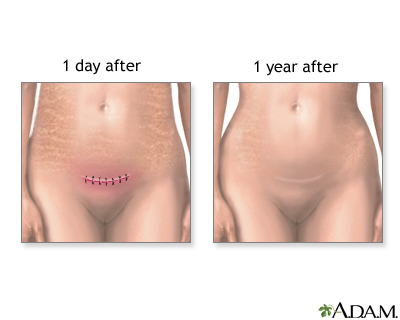 |